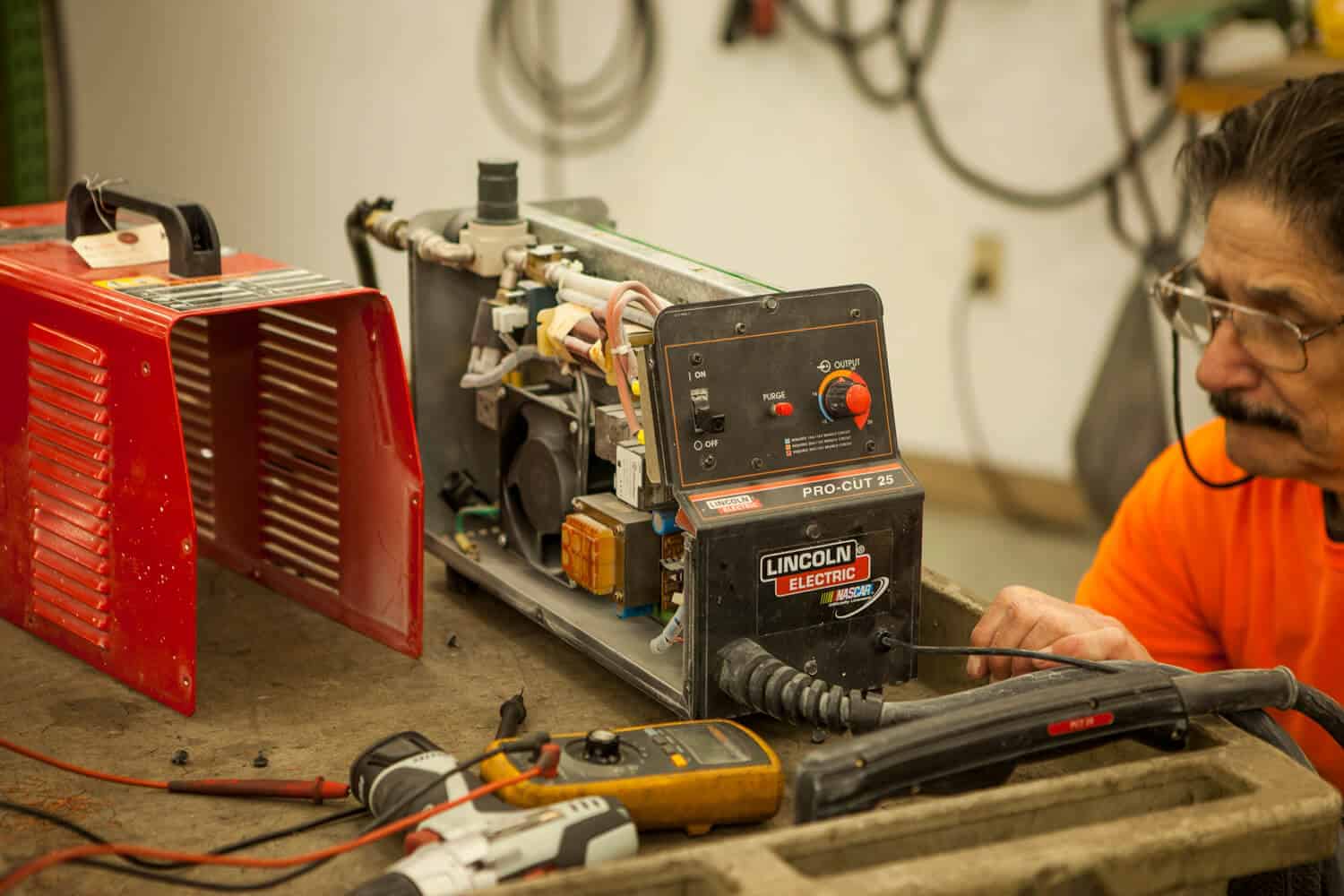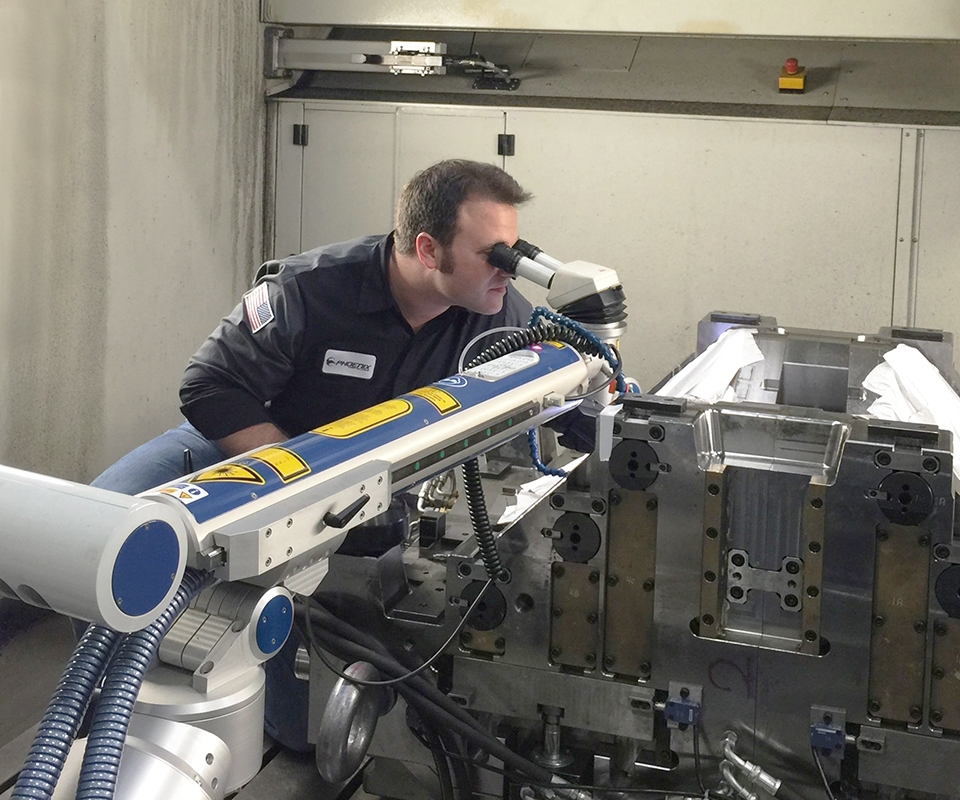Typical Welding Repair Service Issues and How to Address Them Properly
Welding repair services often come across a variety of issues that can endanger the integrity of the final product. Typical troubles include insufficient penetration, porosity, and imbalance, to name a few. Each problem presents one-of-a-kind challenges that call for particular strategies for resolution. Recognizing these concerns is essential for welders intending to enhance their skills and results. This discussion will certainly explore these usual welding repair service concerns and efficient approaches to address them.
Insufficient Penetration
Inadequate infiltration takes place when the weld metal fails to totally fuse with the base product, leading to weak joints and potential structural failings. This issue usually originates from not enough heat input, incorrect electrode angle, or incorrect welding rate. Welders might run into poor penetration as a result of a mistake of the necessary criteria for a certain product thickness or type. In addition, contamination on the base material's surface area can hinder effective bonding, intensifying the problem. To attend to inadequate infiltration, welders ought to ensure suitable setups on their devices and maintain a tidy job surface. Regular examination of welds is suggested to recognize any deficiencies early, permitting timely adjustments and the prevention of compromised structural honesty in welded assemblies.
Porosity
Porosity is an usual issue in bonded joints that materializes as little gas bubbles caught within the weld metal. This problem can endanger the integrity of the weld, resulting in reduced strength and potential failure under tension. Montana Mobile Welding and Repair Belgrade Fabrication. Porosity typically develops from contamination, moisture, or inappropriate welding methods, which enable gases to run away right into the molten weld swimming pool. To address porosity, welders must guarantee appropriate surface area prep work, preserve a tidy workplace, and utilize suitable welding criteria. In addition, picking the right filler material and protecting gas can minimize gas entrapment. Regular examination and screening of welds can assist recognize porosity early, guaranteeing timely rehabilitative activities are taken, therefore protecting the quality and dependability of the welded framework
Imbalance
Imbalance in welding can occur from various elements, consisting of improper arrangement and thermal growth. Understanding the source is essential for effective resolution. Several correction methods are offered to straighten parts and ensure architectural stability.
Reasons of Imbalance
Welding imbalance typically originates from a selection of underlying problems that can endanger architectural stability. One key reason is inappropriate fit-up of components prior to welding, which can result in gaps and irregular surface areas. Variants in thermal development during the welding procedure can additionally cause distortion, especially if the products being joined have different coefficients of development. Furthermore, inadequate fixturing and securing may fail to hold parts securely in area, bring about motion during welding. Improperly maintained equipment, consisting of welding machines and tools, may present incongruities in the weld grain, additional adding to imbalance. Operator mistake, stemming from not enough training or experience, can also play a substantial role in creating misaligned welds.

Improvement Methods Available
Attending to misalignment successfully calls for a mix of restorative techniques tailored to the details problems handy. One typical method is making use of jigs or fixtures to hold components in the right setting during welding, making sure consistent alignment. In addition, preheating the materials can aid reduce distortion and enhance fit-up. For substantial misalignment, mechanical realignment techniques, such as making use of hydraulic jacks or clamps, can be used to remedy the position prior to welding. Post-weld warmth treatment may likewise be essential to eliminate anxieties triggered by imbalance. Careful evaluation and modification throughout the setup stage can protect against imbalance concerns from becoming significant issues, promoting a smoother welding process and enhancing total architectural stability.
Distortion
Distortion is a typical obstacle in welding that can arise from various aspects, consisting of irregular cooling and heating. Recognizing the reasons for distortion is crucial for implementing efficient prevention methods. Resolving this problem not only improves architectural stability yet likewise enhances the total quality of the weld.
Reasons for Distortion
When subjected to the intense warm of welding, materials frequently go through modifications that can lead to distortion. This sensation mainly develops from thermal growth and contraction during the welding procedure. As the weld area warms up, the product expands; upon cooling, it gets, which can produce interior stresses. On top of that, uneven home heating across a work surface can aggravate these tensions, resulting in bending or flexing. The sort of material additionally plays a considerable function; metals with differing thermal conductivity and coefficients of expansion might respond differently, causing uncertain distortions. Bad joint design and insufficient fixturing can contribute to misalignment during welding, boosting the possibility of distortion. Understanding these reasons is vital for reliable welding repair service and prevention approaches.
Prevention Techniques
Reliable prevention strategies for distortion throughout welding focus on controlling warmth input and making sure correct joint design. Maintaining a constant warm input assists to minimize thermal growth and contraction, which can bring about distortion. Utilizing techniques such as pre-heating the work surface can additionally reduce the temperature level slope, promoting consistent heating. Additionally, selecting ideal joint designs, such as T-joints or lap joints, can enhance stability and lower stress and anxiety focus. Implementing proper fixturing to protect the workpieces in position further help in maintaining alignment during the welding procedure. Finally, staggered welding sequences can disperse warm much more evenly, preventing local distortion. By applying these strategies, welders can considerably lower the probability of distortion and boost the total top quality of their welds.
Splitting
Cracking is a typical issue come across in welding repair work, usually arising from various elements such as improper cooling rates, product choice, or inadequate joint prep work. The incident of cracks can significantly jeopardize the honesty of the weld, bring about prospective failures throughout procedure. To resolve this issue, welders should first examine the origin, guaranteeing that products are compatible and appropriately chosen for the particular application. In addition, managing the cooling rate throughout the welding procedure is crucial; fast cooling can generate stress and anxiety and bring about cracking. Appropriate joint layout and preparation also add to reducing the threat. Executing these strategies can improve weld quality and resilience, inevitably minimizing the likelihood of fracturing in completed weldments.

Insufficient Blend
A substantial problem in welding repair work is incomplete combination, which occurs when the weld metal does not effectively bond with the base material or previous weld passes - Belgrade. This issue can bring about weaknesses in the joint, potentially endangering the stability of the welded framework. Factors contributing to insufficient fusion consist of inadequate heat input, inappropriate welding strategy, and contamination of the surface areas being joined. To address this concern properly, welders ought to ensure correct pre-weld cleaning and surface area prep work, along with change their welding criteria to attain sufficient penetration and combination. Regular inspection during the welding procedure can likewise look at this site assist recognize incomplete combination early, enabling for prompt restorative procedures to boost the total top quality of the weld
Overheating
While welding repairs can improve architectural integrity, overheating presents a considerable obstacle that can bring about material degradation. Too much warm during welding can modify the mechanical buildings of steels, causing minimized stamina, boosted brittleness, and bending. This sensation is especially vital in high-stress applications where architectural dependability is critical. Determining clarke mig welder getting too hot can include aesthetic evaluations for discoloration or distortion, in addition to keeping track of temperature level throughout the welding procedure. To reduce the threats connected with overheating, welders ought to use suitable methods, such as regulating warm input, adjusting traveling rate, and using suitable filler products. Additionally, applying pre- and post-weld warm treatments can aid recover product properties and boost the overall high quality of the fixing, ensuring lasting efficiency and security.
Regularly Asked Questions
What Are the Usual Indicators of a Welding Flaw?

Exactly How Can I Evaluate My Welds for Quality?
To examine welds for top quality, one can make use of aesthetic inspections, ultrasonic testing, and radiographic techniques. Each method guarantees architectural honesty, identifies issues, and confirms adherence to specified criteria, eventually improving the integrity of the bonded joints.
What Safety Preventative Measures Should I Take While Welding?
When welding, one ought to prioritize safety and security by putting on ideal personal protective devices, making certain appropriate air flow, protecting combustible products away, preserving a tidy office, and understanding environments to protect against injuries and accidents.
Can I Fix a Weld Without Redesigning the Entire Joint?
Repairing a weld without remodeling the whole joint is possible, depending on the damage (Montana Mobile Welding and Repair Belgrade Welding). Strategies such as grinding, adding filler material, or using a welding procedure can successfully resolve specific imperfections while protecting the bordering framework
What Devices Are Vital for Reliable Welding Fixes?
Crucial devices for efficient welding repair work include a welding device, cable brush, mill, protective gear, clamps, and filler materials. Each device plays an important function in making certain high quality and safety throughout the repair service process. Porosity typically emerges from contamination, dampness, or incorrect welding techniques, which allow navigate here gases to run away right into the molten weld pool. Badly maintained tools, consisting of welding devices and devices, may present inconsistencies in the weld grain, more contributing to misalignment. When subjected to the intense warm of welding, materials typically go through changes that can lead to distortion. Breaking is a typical problem run into in welding repairs, frequently resulting from numerous aspects such as inappropriate air conditioning prices, material selection, or inadequate joint preparation. A substantial issue in welding repair services is insufficient blend, which takes place when the weld metal does not sufficiently bond with the base material or previous weld passes.